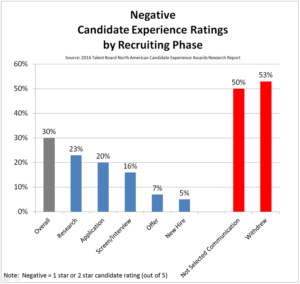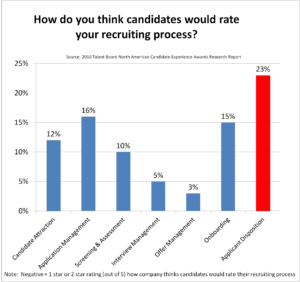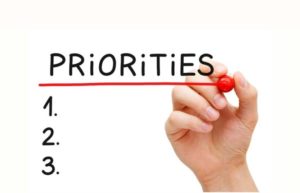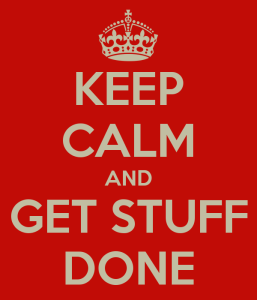In my last article I wrote about four causes of bad hires that I’ve encountered in my career. Now I will discuss a few ways to avoid making a poor hiring choice during the candidate selection process by addressing each of the causes one by one. While many of the recommendations might seem obvious, it is amazing how many large companies we work with do not employ any of them. Many talent acquisition organizations just let the hiring manager use an unstructured process which relies heavily on personal choice and entropy to evaluate a candidate.

- Try before you buy: To address “Lack of technical/functional expertise”
Anyone can claim they are an expert in something and stick it on their resume or LinkedIn profile, but how do you really know they have the specific skills needed for your role. If it is a deep technical skill requirement there are many assessment tools available from a variety of online and offline companies. My preference is to have a test drive with the candidate where you create a simulated experience to the actual job they would perform. Ideally it would be an actual task or problem that currently needs solving (or was recently solved). It is uncanny how this type of exercise can quickly separate the wheat from the chaff. For someone who is really an expert, the simulation should be a breeze – and it should also quickly expose the fakers. The challenge with these trials is that they take time and (many times) money. Depending on the situation, paying people for their time is quite valuable and makes them feel that they are being compensated for the ‘work’ they are performing. In the end, investing a few hundred dollars up front to see if someone really has the technical chops for the role, can save you thousands of dollars down the road.
- Pattern recognition: To address “Inability to develop domain expertise”
When you hire someone from a different industry, market or customer segment, there is risk that they are a hammer who thinks everything is a nail. Therefore, it is important to assess how good they are at pattern recognition and if they notice the differences between industries, markets and customers for the job compared to their past experience. For more junior level positions you can have a candidate take a pattern recognitions test like Procter & Gamble does for all their entry level positions. For experience roles it is important to spend the time seeing if the prospect grasps the differences and has the business acumen to appreciate the situation. How much research has the candidate done into the market, customers, company & job? Can they articulate the similarities and differences between their past roles and this one? Do they have the intellectual curiosity to dive deep and appreciate the different dynamics? Without the ability to articulate both the strategic and tactical contrasts, then you risk hiring someone who won’t adapt well to their new situation.

- STAR methodology: To address “Can’t deliver results”
Past experience and results are usually the best predictors of future success. Even though past roles may not be the same level of responsibility or challenge as your job opening, seeing that someone has succeeded in similar situations or has shown a trajectory of results and expanded responsibility are pretty telling.
Using the STAR interviewing methodology is the most common behavior-focused method to understand what results the candidate was able to deliver. The key to this approach is making sure the candidate talks specifically about what they themselves did, not the team or the company. Teasing out the specific results that were directly tied to the candidate’s efforts is not always easy and without peeling back the onion on the unique contributions they made is what’s most important.
Implementing the STAR method takes time and effort to prepare before candidates ever come in the door. How much time do you spend with the hiring team discussing what to look for when during their interviews? We have a client who has the entire interview team get together for at least one hour to holistically discuss what success looks like for the role, get alignment on the competencies to evaluate for the job and then divides and conquers the competencies/ questions amongst the team. This is a big up-front investment, but it is uncanny how it pays off for them.
One of my favorite pieces of advice I received about ensuring someone can deliver results is to show them exactly the results they would be expected to deliver for the role. Yes, the actual targets. And then have a collaborative discussion the strategies and tactics that they would employ to deliver the results. It’s amazing how this can both help the candidate self-select if this is the right role for them and also set expectation & motivation for the a new employee – since they knew exactly what they were signing up for when they took the job.
- Self-Awareness triangulation: To address “Lack of self-awareness”
A lack of self-awareness is a killer trait for a bad hire. Someone who is self aware will pro-actively make adjustments to address gaps in the performance and typically will also be open to feedback. Without self awareness, the opposite holds true. But how do you measure self-awareness? This isn’t as simple as asking ‘What is your biggest weakness?’. I recommend using a combination of techniques to triangulate information collected from the candidate, the hiring team and references.
During the interview process, asking probing self-awareness questions about specific projects can be very revealing about a candidate. Here are some of my favorites:
“Looking back what would you have differently for this project?” –Note: this question can be used for both successful and unsuccessful situations.
“’What skills are you lacking?’
“If I called the past manager that has liked you the least, and what would they tell me about you?”
“What would you do if you realized you were failing in this job?”
References are another way to learn about a candidate’s abilities and development areas. Asking a reference to compare the former direct report to the best person for the same role they held and understanding the gaps is very telling.
Taking the candidates responses, your hiring team’s probing questions , triangulating them with the candidate’s professional references and your own observations can be a powerful way to assess self- awareness.
If you’ve ever made a bad hire you know that there was likely at least one piece of data captured during the selection process that signaled a red flag for a candidate. But for whatever reason it was ignored and eventually came back to haunt you. Being able to recognize the sources of a bad hire and how to spend the extra time, effort and money to tackle them head-on before an offer is essential. Hopefully these methods will help you learn from the mistakes of others and avoid making a bad hire.
__________________________________________
About the Author: Ray Tenenbaum is the founder of Great Hires, a recruiting technology startup offering a mobile-first Candidate Experience platform for both candidates and hiring teams. Ray has previously spent half of his career building Silicon Valley startups such as Red Answers and Adify (later sold to Cox Media); the other half of his career was spent in marketing and leadership roles at enterprise organizations including Procter & Gamble, Kraft, Booz & Co. and Intuit. Ray holds an MBA from the University of Michigan as well as a bachelor’s in chemical engineering from McGill University.
Follow Ray on Twitter @rayten or connect with him on LinkedIn.
 It shouldn’t be surprising that candidates get treated better as they progress down the recruiting funnel and the company gets more serious about wanting the candidate to join their organization. What is a surprise is how much the negative ratings spike after either the company or the candidate decided they aren’t right for each other. The report suggests candidates are looking for better ways to be told they aren’t moving forward when they are rejected. In addition, candidates who are withdrawing cite their time being wasted for appointments/interviews and the process taking too long as their primary reasons for taking themselves out of consideration.
It shouldn’t be surprising that candidates get treated better as they progress down the recruiting funnel and the company gets more serious about wanting the candidate to join their organization. What is a surprise is how much the negative ratings spike after either the company or the candidate decided they aren’t right for each other. The report suggests candidates are looking for better ways to be told they aren’t moving forward when they are rejected. In addition, candidates who are withdrawing cite their time being wasted for appointments/interviews and the process taking too long as their primary reasons for taking themselves out of consideration.







